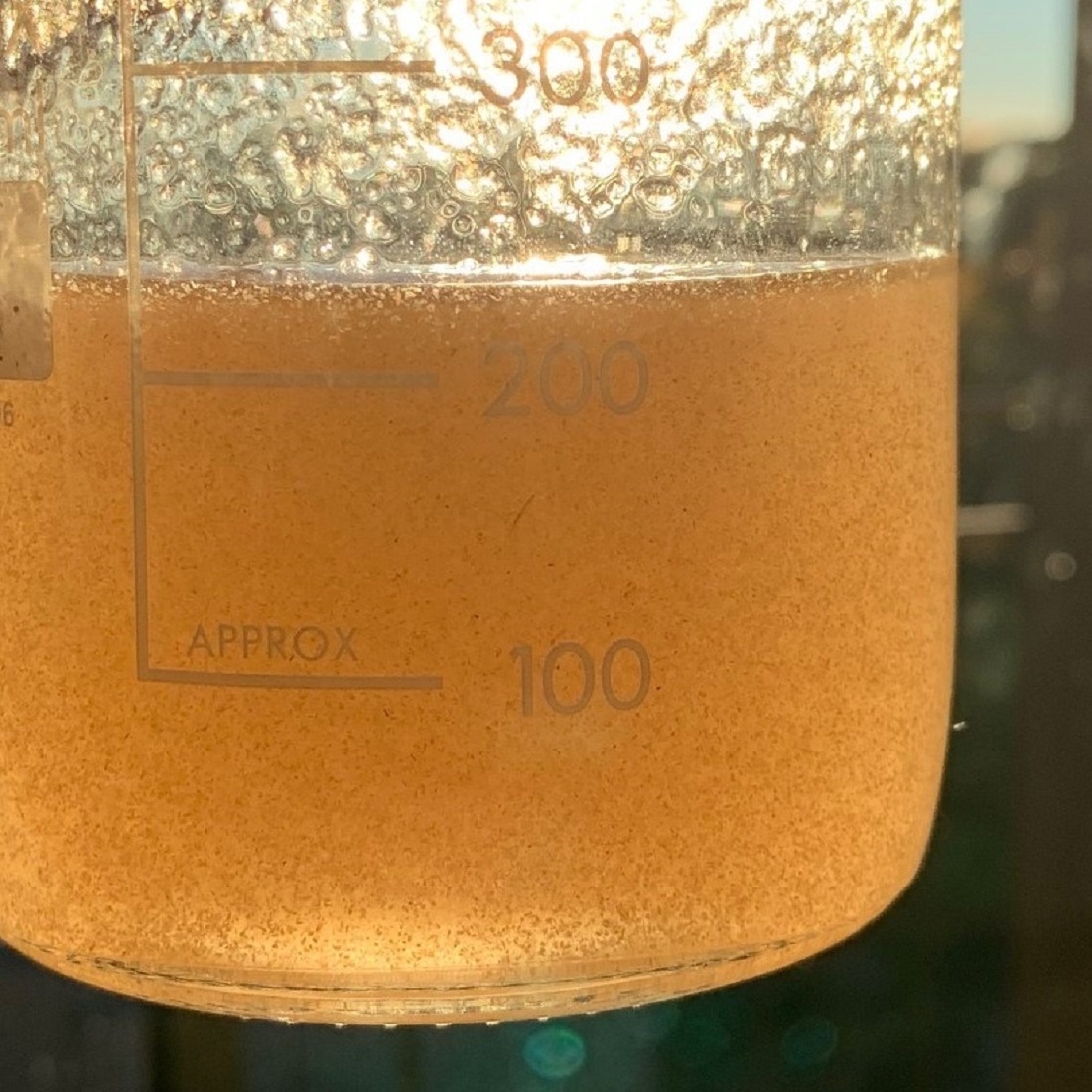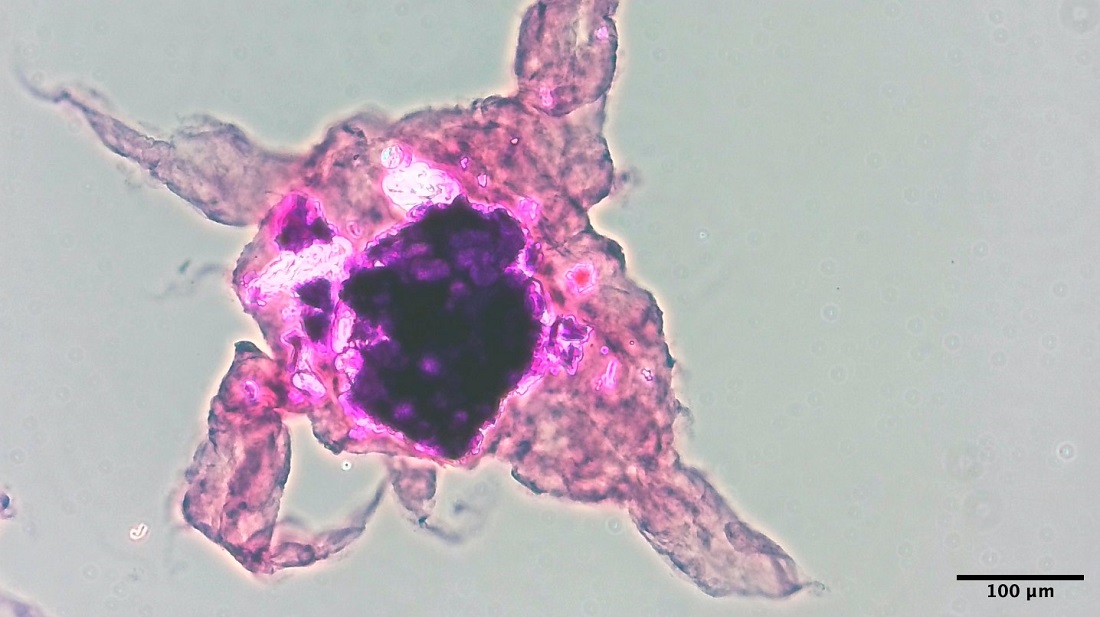Researchers eliminate the gritty mouth feel: How to make it easier to eat fiber-rich foods
Fiber is something that most of us get far too little of. To change that, we need to actually enjoy eating it. Food researchers from the University of Copenhagen have now invented a "disguise" that solves the problem of the dry and gritty mouth feel of fibers.

Think of how it would be to drink a juice with wheat bran in it – you may imagine an unpleasant gritty sensation which would make you less prone to enjoy it.
Unfortunately, this feeling is often associated with insoluble dietary fibers. Those are the kind of fibers found in e.g. wheat bran, vegetables, and whole grains. The unfortunate feeling is a problem as the majority of the world’s population doesn’t consume enough fibers, which are crucial for our bodies. This negatively affects human health in several ways. For example, fibers help prevent cardiovascular diseases, diabetes, and colon cancer. In fact, a lack of fiber intake leads to roughly one million deaths annually.
“If we don't like it, we don't eat it. It's that simple. And no one would enjoy eating grainy flour – but that's roughly what the sensation of insoluble dietary fibers often produces, especially added to more liquid foods like yogurt, juices and beverages,” says Professor Lilia Ahrné of the University of Copenhagen’s Department of Food Science.
While insoluble fibers work well in breads, there are many other types of products where this isn’t the case. This is due to the dry (similar to the sensation known from red wine and green tea) and grainy-like feeling in the mouth that most people find unappetizing.
“This is why there is such a limited selection of fiber-rich foods and beverages. And that’s why it’s important to figure out how to incorporate fibers into more foods without causing a bad eating experience. The more variety there is in fiber-rich products, the greater the likelihood that people will increase their fiber intake. And now, we have a potential solution,” says Lilia Ahrné.

From rough to velvet
Ahrné and a team of research colleagues from both Denmark and other countries have developed a way to 'disguise' fibers, by making them – quite literally – more palatable.
Inspired by foods like chia seeds, which are naturally enveloped in a soft, gel-like layer, the researchers encapsulated pea cell-wall fibers in a gel that forms a soft coating around the fiber particles.
“The gel coating makes the fibers feel velvety, like cream on the tongue, where you can't feel the individual particles because the gel prevents contact between the particles and the tongue. Since the gel is at least as soft as tongue tissue, it doesn’t trigger the sensory receptors, and we don’t perceive the gritty texture,” explains Gabriele D’Oria, former PhD student at the Department of Food Science, now postdoctoral researcher at INRAE - Université Paris-Saclay and first author of the research article on the study.
The gel-coated particles were put to the test with a trained tasting panel, where the results demonstrated that the test subjects perceived up to 52% less fibers, while the gel reduced the sensation of grittiness by 42% and dryness in the mouth by 36%.
“We have now demonstrated that gel coating works. The gel can be refined and adjusted depending on the purpose. And in principle, the method can be used for all types of foods and beverages,” says Gabriele D’Oria.
The gel is both flavor- and odor-free and is based on gellan gum, which is produced by bacteria and already deployed in the production of foods for other purposes. Furthermore, the process is also quick and simple.
“In lab trials, it took me seven minutes to produce thousands of coated fiber particles. And this can definitely be upscaled once operating on a larger scale. One could imagine giant silos producing tons of coated fiber particles,” says Gabriele D’Oria.

Beneficial for elder health – and climate
In the long run, the researchers hope that the idea could help solve an increasingly widespread health dilemma:
“We are dealing with a global nutritional issue that will only grow as the world’s population ages. Elderly people who consume too little fiber are more prone to, among other things, digestive issues, unintended weight loss and general frailty. Therefore, there will be a need to develop fiber-rich products that people actually want to eat,” says Lilia Ahrné.
The researchers believe that it makes sense to use gel coating in liquid foods like juice and drinkable yogurt.
Furthermore, the camouflaged fibers have the potential to become a climate-friendly diet option, as Ahrné points out:
“We are all aware of the need to shift to more plant-based diets. If we can understand how to address the negative experiences of eating dietary fibers, we can better utilize fiber-rich by-products, such as bran from grains, in a sustainable way.”
Contact
Lilia Ahrné
Professor
Department of Food Science
University of Copenhagen
lilia@food.ku.dk
(+45) 93 56 55 07
Gabriele D’Oria
Postdoctoral Researcher
Food and Bioproduct Engineering
INRAE - Université Paris-Saclay
gabriele.d-oria@inrae.fr
(+39) 3454118799
Maria Hornbek
Journalist
Faculty of Science
University of Copenhagen
maho@science.ku.dk
(+45) 22 95 42 83
